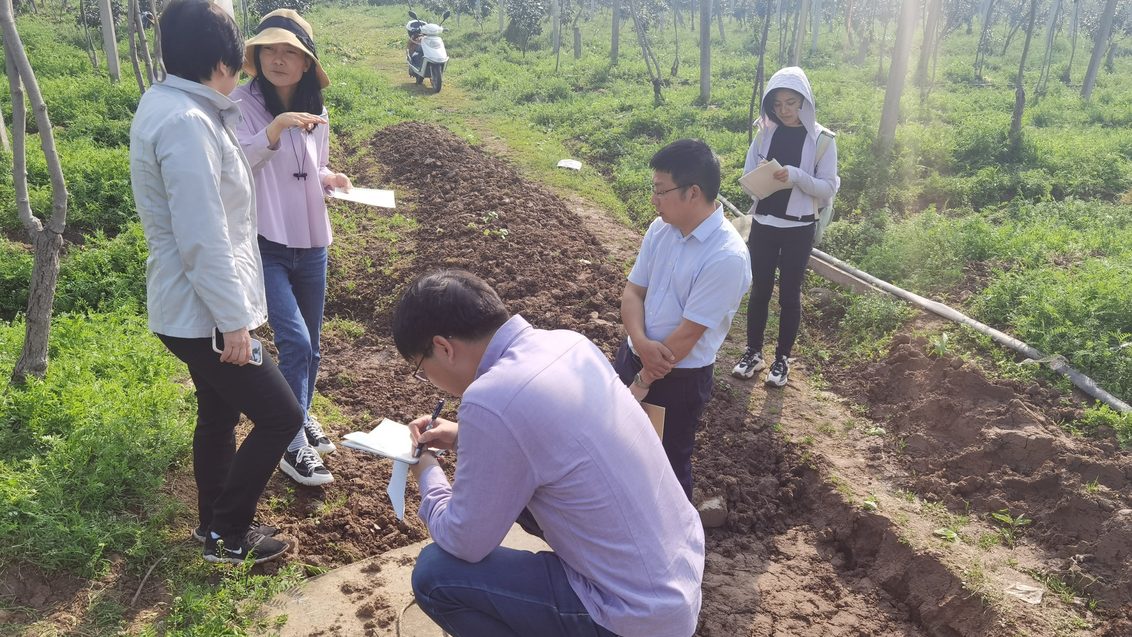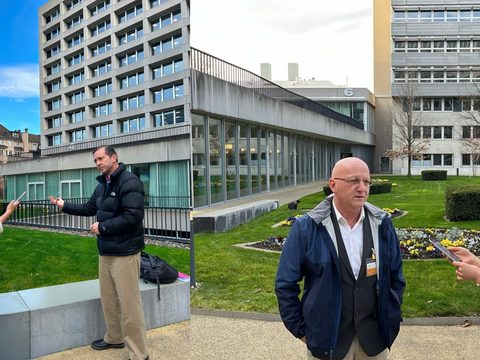Rice and kiwi get climate-smarter

Promoting low-carbon crop systems in Sichuan
By Ge Le* and Yuan Zhou**
Climate change is one of humanity’s most critical challenges. Agriculture is heavily affected because it depends so much on weather patterns and ecosystems. However, the sector is not only highly susceptible; it also contributes to climate change. Overall, more than one-third of greenhouse gas (GHG) emissions come from farming and food systems.
Climate-smart Agriculture (CSA) is a critical response. It aims to adapt and transform farming systems, ensuring sustainable development and food security. CSA aligns with the Chinese government's ambitious goals of peaking carbon dioxide emissions before 2030 and achieving carbon neutrality by 2060.
Sichuan Province is a leading agricultural region. It is committed to being one of the nation’s key granaries. The province plays a crucial role in China's efforts to curb GHG emissions and progress towards carbon neutrality. Rice is one of its food security staples. It is also a key source of the agricultural GHG emissions, especially methane. Expanding rice cultivation brings the challenge of more methane emissions from paddy fields.
At first sight, Sichuan presents a complex puzzle for establishing low-carbon agriculture. With many farms being small and fragmented, its topography, climatic conditions, soils, and farming methods vary widely. Sichuan farmers have been hesitant to adopt practices that sequestrate carbon or reduce emissions.
A provincial partnership between TNC and our Foundation promotes climate-smart agriculture for low carbon farming. Together with both the Chinese Academy of Agricultural Sciences and its Sichuan equivalent, we have studied several critical topics. Work started with a detailed assessment of farm GHG emissions across 21 city areas and a prefecture. The team then evaluated climate-smart technologies that reduce methane from rice paddies and nitrous oxide emissions across several crops. Exploration of technical specifications produced practical guidance on low-carbon cultivation of rice and kiwi.
Our findings indicate that Sichuan’s crop carbon emissions and their intensity vary significantly. Overall, the intensity is decreasing. To continue reducing methane from rice farming, we see four priorities: better water management, better use of straw, changes in winter paddy production, and use of varieties with high yields and low emissions. To cut nitrous oxide emissions, we recommend: 1) carefully reducing nitrogen fertilizer use, 2) adopting high-efficiency fertilizers and inoculants, 3) improving nitrogen application, and 4) growing more nitrogen-fixing crops. Taken together, implementation of these eight points could reduce Sichuan’s farm GHG emissions by approximately 12%.
Our project team has also conducted “carbon footprint accounting”[1] using the Life Cycle Assessment method for rice and kiwi. We have analyzed climate-smart technologies suitable for low-carbon production and developed a menu of emission-reduction technologies. The team has also completed two sets of technical specifications for low-carbon rice and kiwi production. These give farmers cost-effective, science-based guidance. Training on the specifications helps agricultural enterprises, cooperatives, and smallholders understand how to move to low-carbon production.
To facilitate dissemination, an early project step was to establish an expert committee. This brings together provincial policymakers, academics, and representatives from agriculture. The committee guides the project's strategic direction and technical execution. Regular meetings ensure project visibility among stakeholders and policymakers. Two years of collaboration culminated last April in the "Sichuan Province Climate Change Adaptation Action Plan", which included the key insights from our project in the agricultural section. Workshops and training sessions extend the project’s reach. In September 2023, for example, more than 200 farmers attended low-carbon rice training in Deyang.
The expert committee also helps with policy. Here, the project partners have several recommendations. We advocate for the creation and implementation of affordable, effective technologies for reducing methane and nitrous oxide emissions. These must be tailored to the specific needs of local crops and terrains; pilot trials encourage adoption by farmers. We also emphasize the importance of bolstering scientific research. This should focus on innovations such as new crop varieties, efficient fertilizers, and biochar production. Establishing comprehensive emissions monitoring and verification is also crucial. So are financial incentives for emission reductions through market-based and ecological compensation mechanisms.
Moving forward, the focus will be on supporting farmers. They are the key agents in the transition to low-carbon agriculture. As they face the greatest risks from climate change, it is imperative to empower farmers with the necessary knowledge, technologies, and incentives to drive this transformation.
*Ge Le is a Consultant of TNC China Program.
**Yuan Zhou is Head of Agricultural Policy and China Program at SFSA
[1] A framework of methods to measure and track how much greenhouse gas an organization (or an activity) emits.

